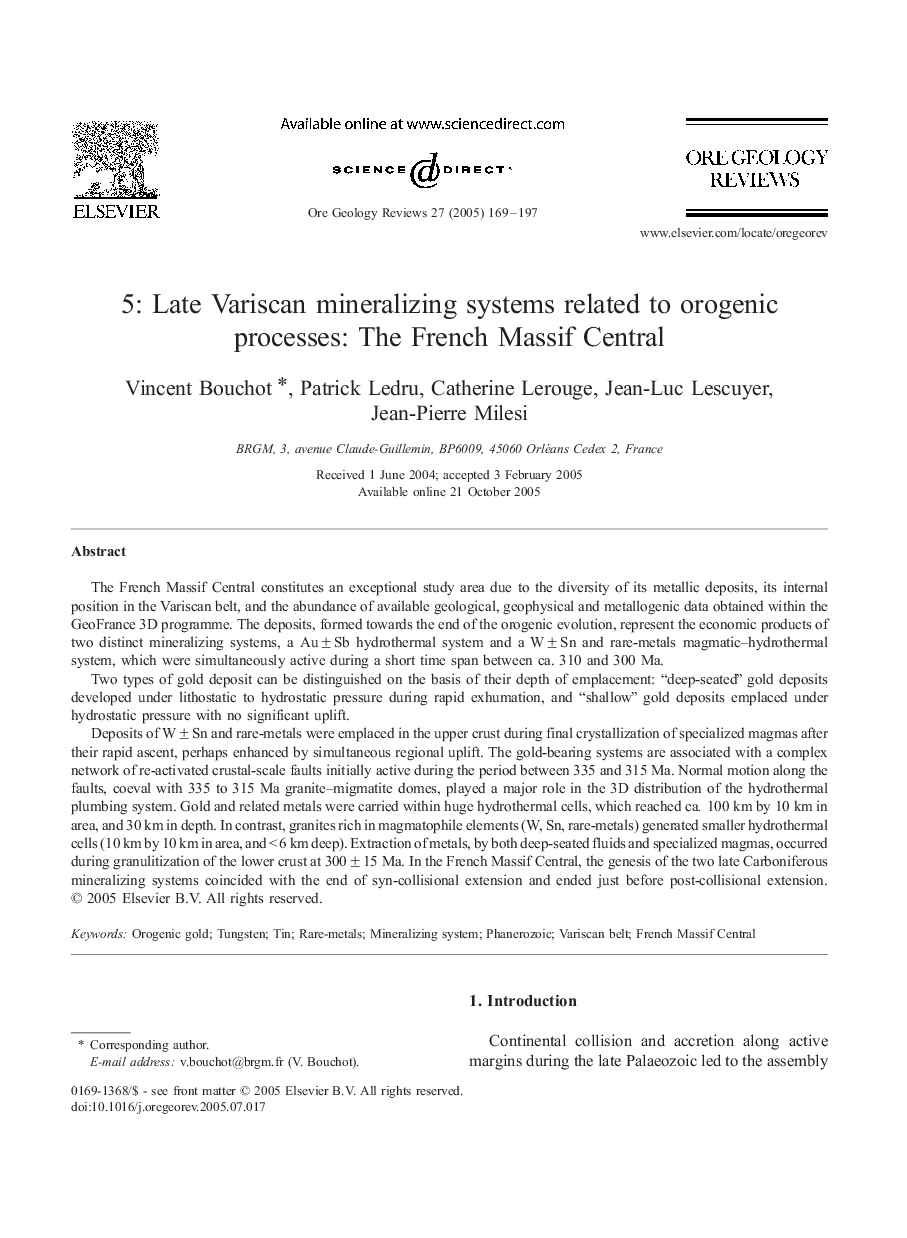| Article ID | Journal | Published Year | Pages | File Type |
|---|---|---|---|---|
| 9528835 | Ore Geology Reviews | 2005 | 29 Pages |
Abstract
Deposits of W ± Sn and rare-metals were emplaced in the upper crust during final crystallization of specialized magmas after their rapid ascent, perhaps enhanced by simultaneous regional uplift. The gold-bearing systems are associated with a complex network of re-activated crustal-scale faults initially active during the period between 335 and 315 Ma. Normal motion along the faults, coeval with 335 to 315 Ma granite-migmatite domes, played a major role in the 3D distribution of the hydrothermal plumbing system. Gold and related metals were carried within huge hydrothermal cells, which reached ca. 100 km by 10 km in area, and 30 km in depth. In contrast, granites rich in magmatophile elements (W, Sn, rare-metals) generated smaller hydrothermal cells (10 km by 10 km in area, and < 6 km deep). Extraction of metals, by both deep-seated fluids and specialized magmas, occurred during granulitization of the lower crust at 300 ± 15 Ma. In the French Massif Central, the genesis of the two late Carboniferous mineralizing systems coincided with the end of syn-collisional extension and ended just before post-collisional extension.
Related Topics
Physical Sciences and Engineering
Earth and Planetary Sciences
Economic Geology
Authors
Vincent Bouchot, Patrick Ledru, Catherine Lerouge, Jean-Luc Lescuyer, Jean-Pierre Milesi,
